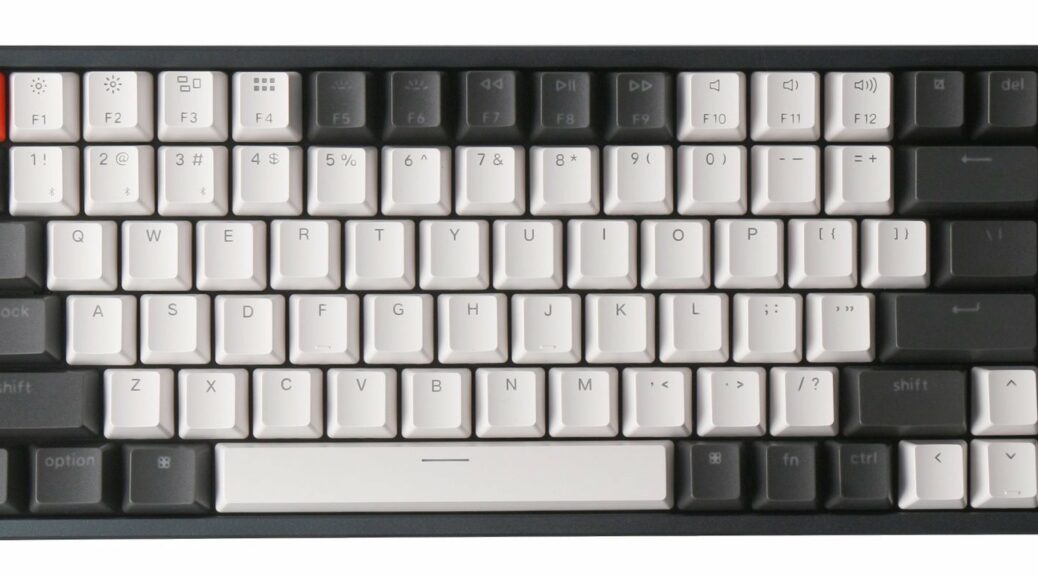I’m not much of a typist. Touch typing is something I never got into, leave alone perfecting it. I’m more of a hunt and peck typist who has evolved. Instead of using just the index finger on each hand, I use one, two, or more fingers on each hand. But my hands still move all over the keyboard instead of staying homed on the home keys like a touch typist’s would.
As a result, my fingers hit the keys much harder than a touch typist’s would. They actually bottom out each key – hard, instead of just depressing each key just to the point of actuation of the switch, or membrane contacts.
I don’t know what kind of keyboard I started with. But it was probably some kind of membrane. By the time I knew about membrane and mechanical keyboards, I was surely using membranes. Sure! I had heard of how cool mechanical keyboards were and all that.
But when I got my first mechanical keyboard, it wasn’t for the great typing experience. It had more to do with the reliability and ease of cleaning. Prior to that my membrane keyboards were going bad quite often. Partly because they were so hard to clean. I would sometimes spray cleaning solutions on them and quickly wipe them clean, hoping the liquid wouldn’t seep inside. But sometimes it would, and there went another keyboard. Sometimes the dirt would interfere with the smooth movement of the keys and even the actuation of the membrane contacts.
So I came across saw the TVSe Gold Bharat – perhaps the most well known mechanical keyboard in India. Well, at least until a few years ago. Any there is good reason for it to be so well known too. A form factor reminiscent of the classic IBM Model M keyboard from the 80’s, the highly acclaimed Cherry MX Blue switches, and all for a price of a little over ₹2000 at that time.
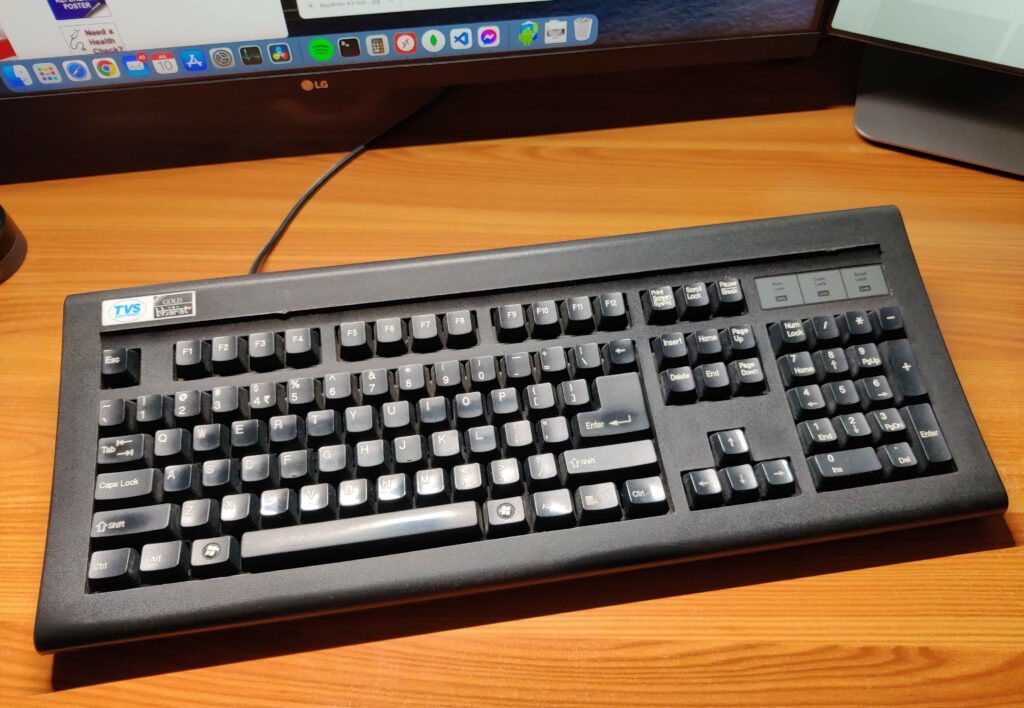
It didn’t take me that long to get used to it. Even though I had been using mostly membrane keyboards till that time, many of the early membrane keyboards still had the feel of mechanical keyboards with individual long travel keys.
And I was enjoying the sound of the Cherry MX Blue switches. Over time though, the sound has become more of an unwanted feature. Especially when I’m trying to type discretely without being audible to everyone in the house and perhaps even the neighbours.
As I don’t touch-type, I noticed that I was making more noise from bottoming out the keys, than from the click of the switches. Also, after 7 years of use most of the switches don’t really make much of an audible click anymore.
So I started looking around to see if I could get something that would still give me a good typing experience without being too loud.
When I had the iMac, I had extensively used the Apple chiclet membrane keyboards for a few years. They are very similar to modern laptop keyboards which I still use. I find that I can usually type pretty fast on them and they are pretty much as silent as keyboards can be. But the typing experience isn’t as satisfying.
I decided I should stick to mechanical keyboards. The really good membrane keyboards such as the ones from Logitech are pretty expensive, and in my case there was no reason to not explore suitable mechanical options at that price range.
Of course, Cherry MX Blues are meant to be noisy and I can opt for less noisier options like brown and red switches, not just from Cherry but other manufacturers like Gateron. But like I said above, much of the noise for me was not coming from the switches actuating, but from me bottoming out the keys hard.
I recently came across these O-rings that can be fitted inside the keycaps to cushion them as they bottom out and hit the tops of the switches. I thought I should try them out on my current keyboard – the TVSe Gold Bharat, before looking for any alternative keyboards. After all, at just ₹699 they are very cost effective and seem to be just what you need to dampen the noise from the keys bottoming out.
There were several options on Amazon.in but I found the least expensive ones at the price I mentioned above at Meckeys.com. They are a specialty Indian site dealing in mechanical keyboards and related parts.
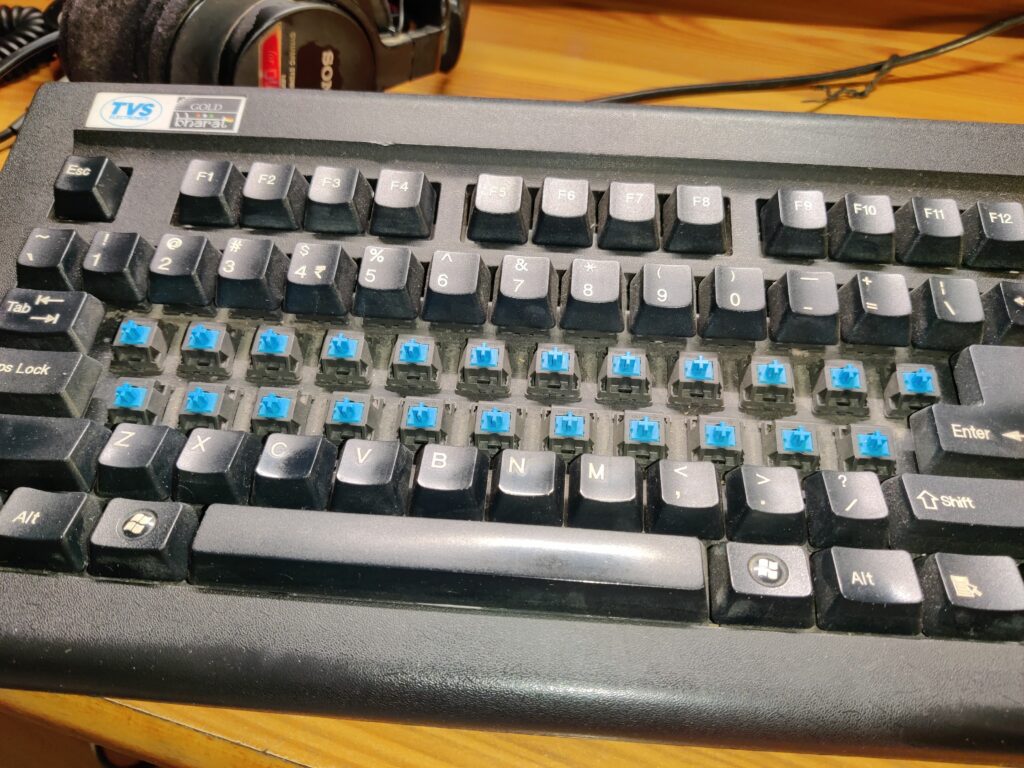
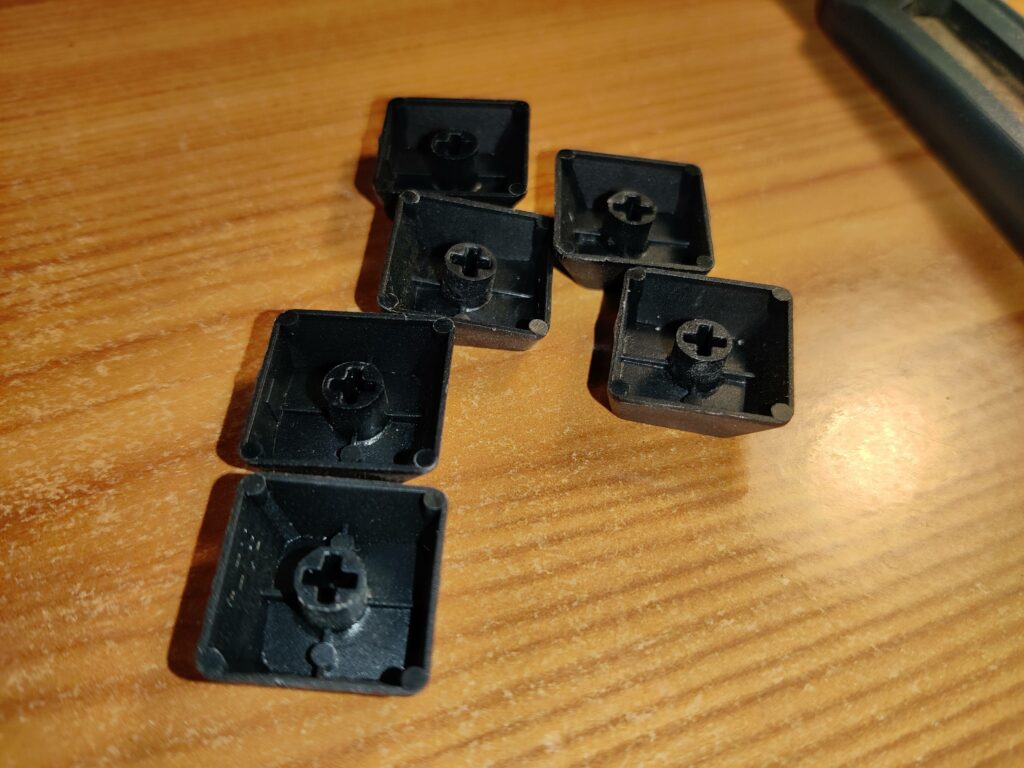
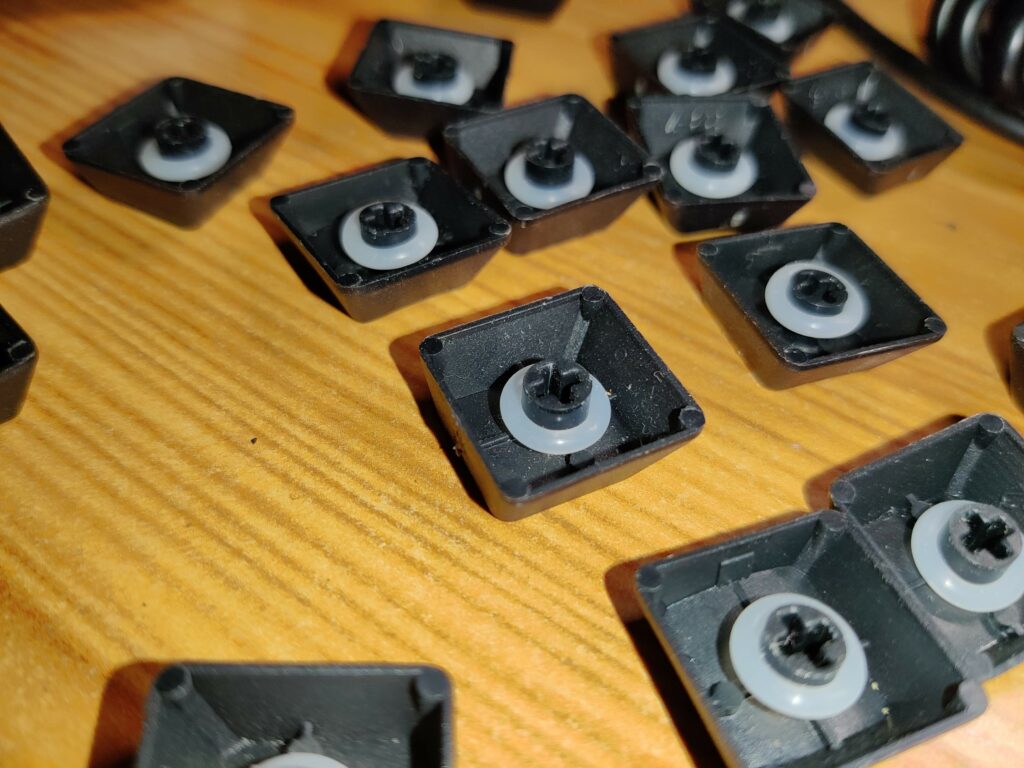
Installation was pretty easy. You need to take the keycaps off and insert the O-rings on the stems. Care needs to be taken to shove them in as far as they will go. If not, they may interfere with the complete depression of the keys and actuation of the switches. Having somewhat long fingernails on that day helped me with that. Otherwise I would probably have to employ a small screwdriver. To begin with, I only installed them on the letter keys, spacebar, enter and the left side modifier keys. The TVSe Gold Bharat uses very old-style stabilizers for the larger keys like the spacebar and enter key which makes it really difficult to remove and re-fit them.
So what’s it like to type with them on? Quiet, for sure. But they also make the keys quite mushy. They almost feel like membrane keyboard keys, although from a good quality membrane keyboard. As there is no more hard noise from the keys bottoming out, you should be able to hear the distinct click of the Cherry MX Blue switches, but in my case they are so old that even the click is barely audible. So in a way, they kind of take away the feel of a mechanical keyboard.
Am I liking them? Well, my typing is no longer noisy, so that’s a good thing. But I’m also missing the feel of a mechanical keyboard. So I might as well be using a membrane keyboard!
So I’m back to looking for alternatives. There are a few mechanical options available in the Indian market now. Not cheap, but not too expensive either.
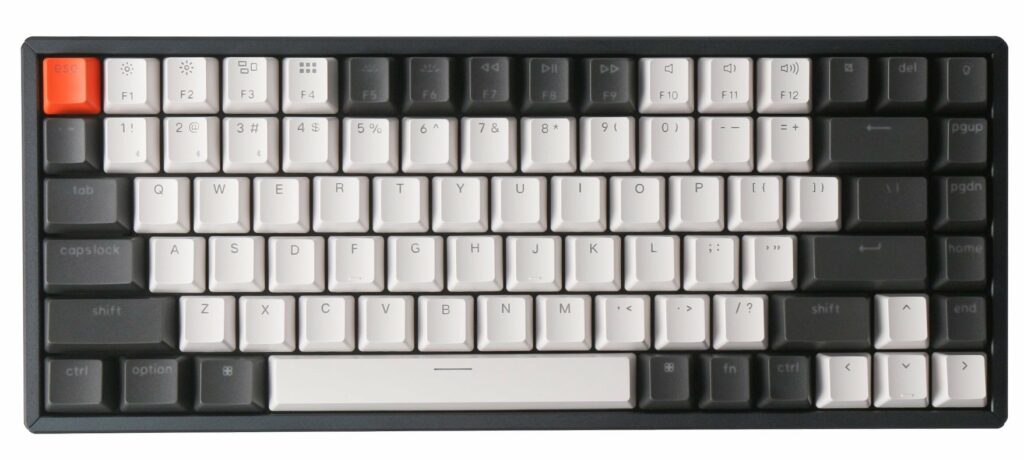
The Keychron K2 is one I am considering. It’s decent quality though not great. But it makes up with a lot of additional features that are typically not seen in this price range. Like Bluetooth and wired connectivity, swappable switches and switchable Windows and Mac layouts with respective keycaps. The latter for me is important now as I’m back to using a Mac. You can pretty much convert any mechanical keyboard to work with a Mac by reassigning the Option and Command keys in MacOS keyboard preferences and swapping the keycaps on the keyboard. That is what I have done on the TVSe Gold Bharat now. Though it feels better to have a proper ⌘ key instead of reusing the ⊞ key.
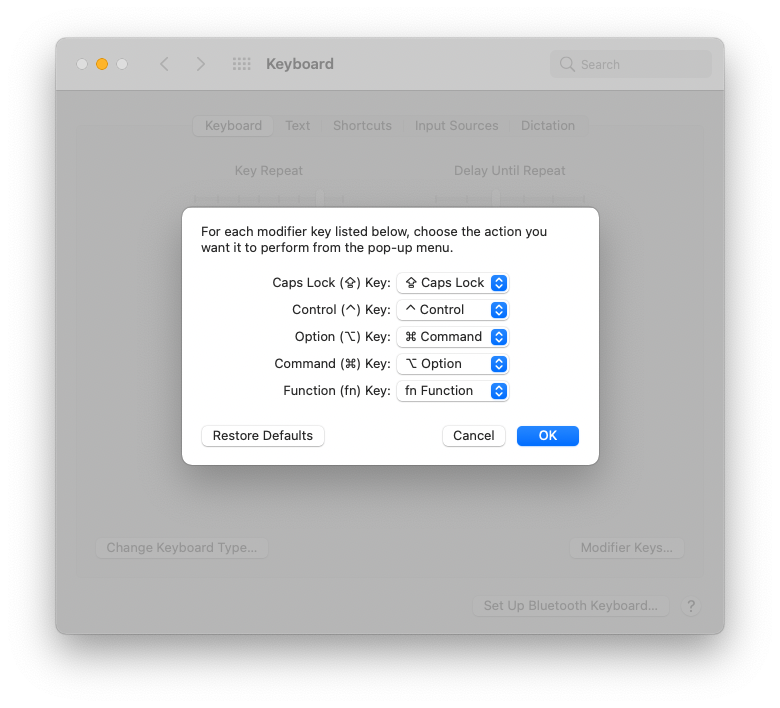
Then there is the Varmilo VA87M which is available in a Mac layout. This is a much better quality keyboard but misses out on some desirable features like Bluetooth connectivity and swappable switches. It is also more expensive. And being a Mac only layout, it can still be used on Windows, though I’m not sure if the Command and Option keys’ (Windows and Alt respectively in Windows) positions can be swapped from within Windows.
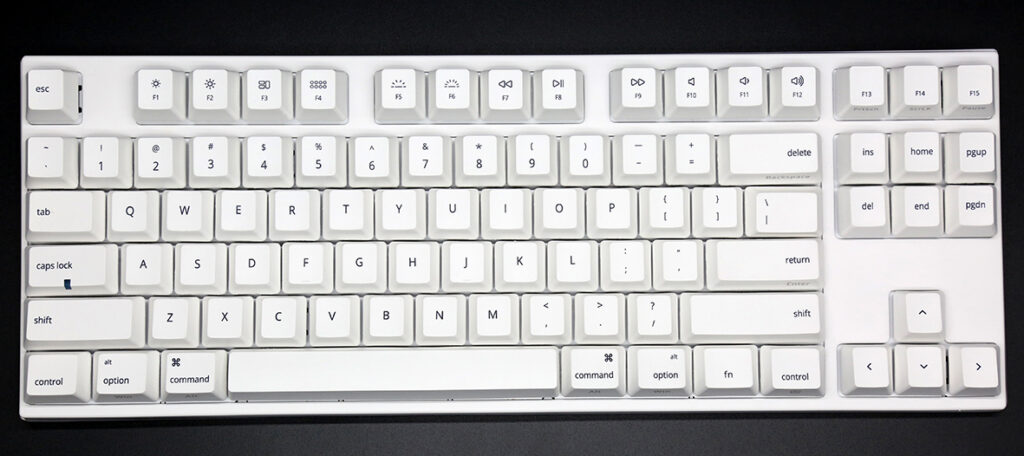
Both of these keyboards are also not full size ones. While the Varmilo VA87M is a TKL (ten-key-less) and misses out on the numpad, the Keychron K2 is a 75% layout and makes the keyboard even more compact by moving the arrow and navigation keys together with the main section.
75% is about the smallest I can go. I very much use the navigation and arrow keys and will be very handicapped without them. Almost the same goes for the function keys. Though not used very often, when I do need them, I often don’t have any alternatives or they are too cumbersome.
The numpad. Now that is something I will probably miss the most going away from a full-size keyboard. I exclusively use the numpad for entering numbers that are more than a couple of digits long. Typing in a phone number, an IP address or simply using a calculator app – the numpad is just so much more convenient. Albeit, a smaller keyboard is so much more helpful in keeping your desk neat, and giving you that much needed space for your mouse. It’s also easier to position it correctly for a comfortable typing experience.
So that’s where where I’m at now. Undecided if I should get a new keyboard. And if so, which one. Whichever way I go, I’d be trading off some features for others. Not the least of all is the money that would have to go into it. Which, if I decide to stay my current keyboard for now, would be none.
So there you have it. If I do decide to upgrade my keyboard, I’ll of course write about it here on the blog. But don’t hold your breath!
